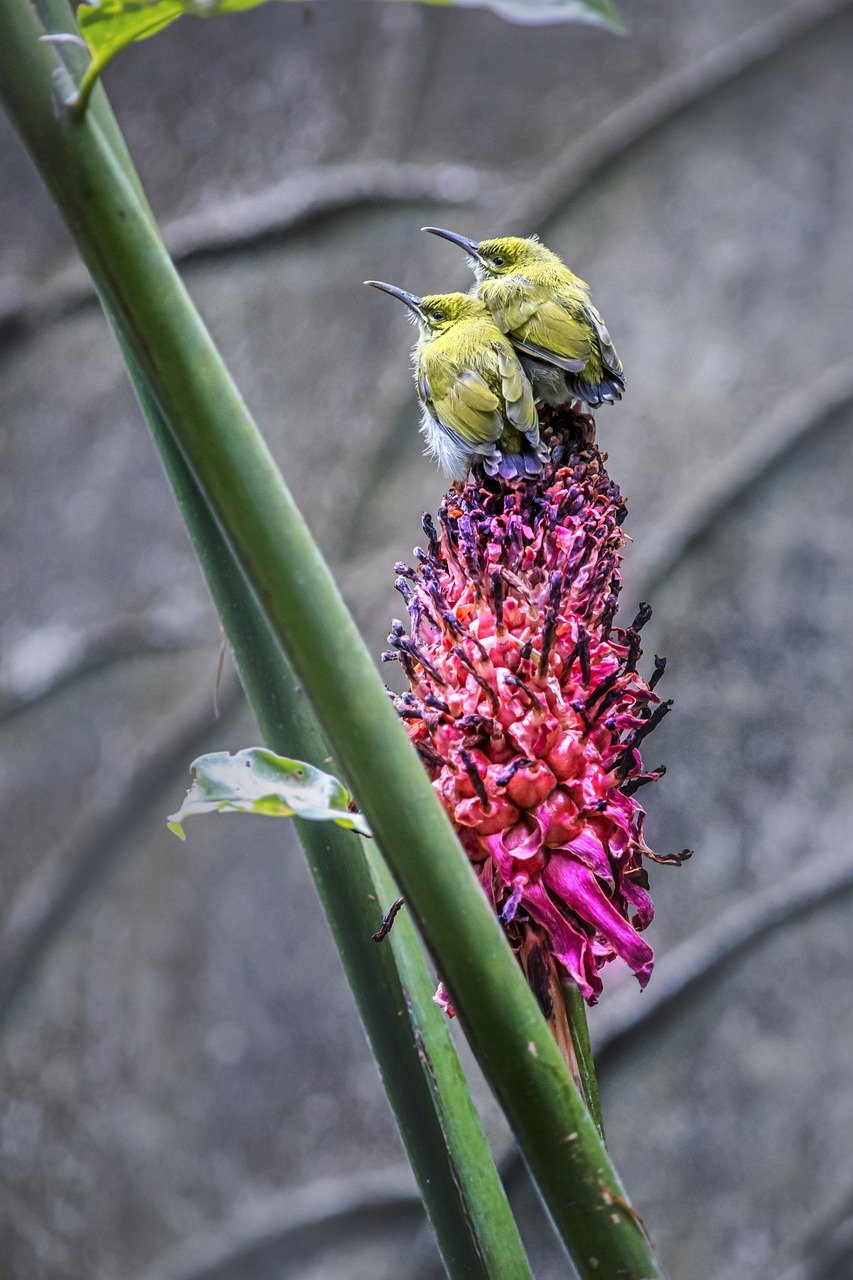The Grey-breasted Spiderhunter (Arachnothera modesta) is an intriguing bird species belonging to the Nectariniidae family. Known for its specialized feeding habits and distinctive appearance, this bird is found in various parts of Southeast Asia.
Description
- Appearance:
- Size: This spiderhunter is a medium-sized bird, typically measuring around 16 to 19 centimeters in length.
- Coloration: As its name suggests, the Grey-breasted Spiderhunter has a greyish-brown breast. Its upperparts are olive-green, while the underparts are generally grey with a subtle brownish hue.
- Bill: One of the most distinctive features is its long, curved bill, adapted for feeding on nectar and small insects, especially spiders.
- Legs and Feet: It has strong legs and feet, suited for clinging to foliage and branches while foraging.
Habitat
- Distribution: The Grey-breasted Spiderhunter is found across a range of Southeast Asian countries, including Thailand, Malaysia, Indonesia, and the Philippines.
- Preferred Environment: This bird inhabits a variety of environments, such as lowland forests, forest edges, secondary growths, plantations, and even gardens. It tends to favor areas where flowering plants and dense foliage are abundant.
Behavior and Ecology
- Diet:
- Nectar Feeding: The primary diet consists of nectar, which it extracts from flowers using its specialized bill. This makes it an important pollinator for various plant species.
- Insectivory: In addition to nectar, it feeds on small insects and spiders, hence the name “spiderhunter.” This diet provides essential proteins and nutrients.
- Foraging: The Grey-breasted Spiderhunter is an active forager, often seen hopping from branch to branch and hovering near flowers to feed.
- Breeding:
- Nesting: Little is known about its specific breeding habits, but like other spiderhunters, it likely nests in well-concealed locations among dense foliage.
- Eggs and Raising Young: Typical nests are cup-shaped, and the female lays a few eggs, which she incubates until they hatch.
Conservation
- Status: The Grey-breasted Spiderhunter is currently listed as Least Concern by the IUCN. It is relatively common within its range, although habitat destruction could pose future threats.
- Conservation Efforts: Conservation efforts focus on preserving forest habitats and minimizing deforestation. Protecting areas with abundant flowering plants is also crucial to maintaining healthy populations.
Observing Grey-breasted Spiderhunters
- Best Times: These birds can be observed year-round, especially in areas with plentiful flowering plants.
- Watching Tips: To spot the Grey-breasted Spiderhunter, visit forest edges, gardens, and plantations early in the morning when the birds are most active. Listen for their calls and look for movement among the flowers and foliage.
Interesting Facts
- Pollination Role: By feeding on nectar, Grey-breasted Spiderhunters play a crucial role in pollinating tropical plants, facilitating plant reproduction and biodiversity.
- Adaptations: Their long, curved bills are perfectly adapted for reaching deep into flowers, showcasing a fascinating example of co-evolution between birds and plants.
- Diverse Diet: While primarily nectarivorous, their insectivorous habits ensure they receive a balanced diet, highlighting their versatility in feeding.
Summary
The Grey-breasted Spiderhunter (Arachnothera modesta) is a remarkable bird species notable for its specialized feeding habits and ecological role as a pollinator. Found across various parts of Southeast Asia, it thrives in environments rich in flowering plants and dense foliage. Observing these birds provides valuable insights into the intricate relationships within ecosystems and underscores the importance of habitat conservation to support diverse wildlife populations. in its range.
Views: 1504
Subscribe to the newsletter:
